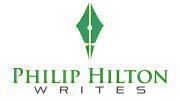Maps are generally considered valuable tools and nothing more. as a writer; I discovered that they can be so much more; here’s what I found.
Not all maps are created equal. Some are designed to give basic information, while others can tell a story. If you write vintage factual or fiction books like me, the humble map can act like a key to another time.
As times change, so do maps and as the past becomes history, landmarks, buildings, roads, and streets quickly disappear. Maps are updated or new ones commissioned, and the past becomes lost in the modern world.
A window into the past
Opening an old map is like looking through a window into the past. For example, when I was writing my first Harry Royle novel, which spanned the late thirties to the early forties and was set in London, Manchester, York and Cardiff, I had to have original maps of these cities. Because during the Second World War, many streets, buildings and even landmarks were destroyed during the heavy bombing. The maps also gave details of places such as workhouses which are now long gone from our society but were a standard part of everyday life for those who came before.
When researching a book about my late father, I needed maps detailing post-war London and seventies Manchester. Just looking at detailed maps from my childhood city gave me unexpected access to memories forgotten long ago. they also gave me insights into how those adults in my life lived during those past times and how the city appeared to them.

Guide books
Maps are created to fit a specific purpose, and when it comes to research, these can be perfect for giving life to the place you wish to populate with your characters. For this reason, period guidebooks can also be extremely valuable. These were written with the traveller or tourist in mind and describe places, but often shops, buildings, museums, churches, directions and even the cost of various items.
It’s essential to stay focused on not getting every detail down because this can lead to boring padding in a book. It’s far better to offer a brief sketch and move on, leaving the reader with a feeling of the place and time without the idea that they’ve been on a guided tour.
When working on a new story, it can be comforting to see the area where the characters live, the roads and streets, shops, theatres and factories which surround them and enrich their life. This can really flesh out a background.
A reader’s insight
A reviewer once commented that one of my stories took him back to the Manchester of his youth and made it come alive again. I managed to achieve this by simply detailing a handful of streets, an old bus station clock, long ago demolished, a factory and a cinema. I didn’t need to copy large amounts of detail from the map, just enough to make it firmly rooted in the reality of that past period.

